Tag: KILZ 3 Premium Primer
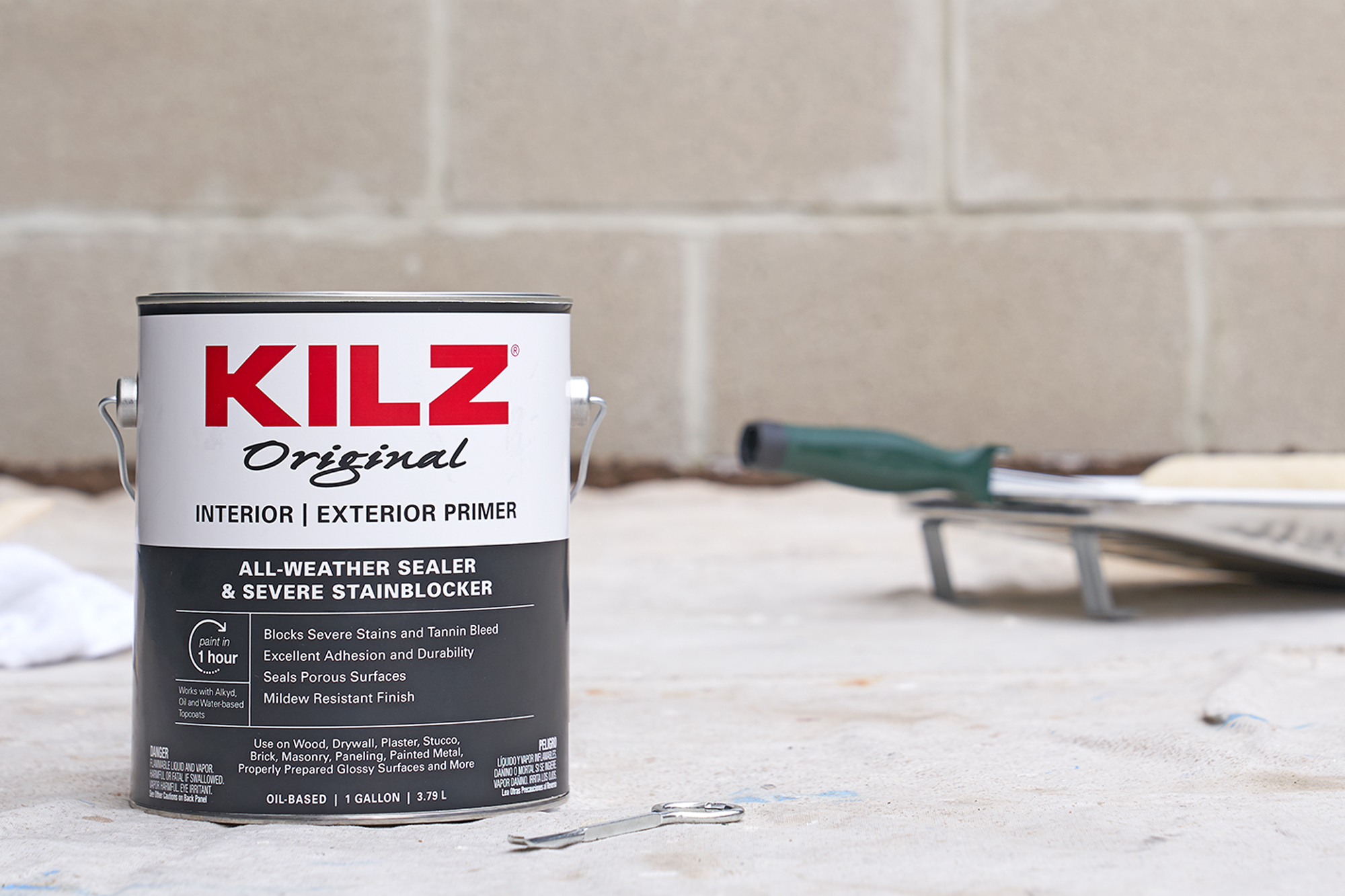
Three Primers for Exterior Projects
August 11, 2020Priming before painting is an important step for nearly every painting project, and we’ve covered quite a few different project types here on The Perfect Finish – including priming when changing wall colors, priming before painting kitchen cabinets, and even priming in moisture prone rooms in your home. Now in the heat of summer, it’s time to talk about an area of the home we haven’t often covered – the outside!
Just as important as proper prep for your indoor painting projects, priming is a critical prep step for outdoor projects. From painting your front door, to the entire exterior of your house, or even a garden fence, KILZ has a primer made for the job. KILZ® Original Primer has been trusted by pros for over 40 years and the KILZ Original lineup includes a primer formulated for outdoor projects. KILZ® Original Interior | Exterior Primer is an all-weather sealer with excellent adhesion to even the toughest to paint surfaces like masonry or bare, porous wood. When using this primer on outdoor brick, stucco or plaster, it’s important to note that the masonry surfaces should be clean, dry and cured for at least 90 days.
KILZ 2® All-Purpose Primer is another product formulated for both interior and exterior use. This water-based sealer and stain blocker would be an excellent choice for painting your front door or garden fence. Just remember this tip from the pros, if the surface you are painting is unpainted, exterior wood that has been exposed to sun and/or moisture longer than 2-4 weeks prior to painting – be sure to clean and sand it before priming. On new masonry surfaces, KILZ 2 All-Purpose can be used once the surfaces has cured for at least 30 days.
Our third pick for exterior projects is KILZ 3® Premium Primer. This fast drying, water-based primer provides excellent adhesion and a mildew resistant coating, making it ideal for exterior surfaces prone to moisture. It can be used for both interior and exterior projects and has a thicker, high-hiding formula great for blocking stains. If you live in a humid environment, KILZ 3 Premium Primer is a great choice for your outdoor painting projects.
What exterior projects will you tackle this summer?
Always remember to refer to our website kilz.com or product back labels for additional information on which primer is right for your project and detailed instructions on how to apply our products.
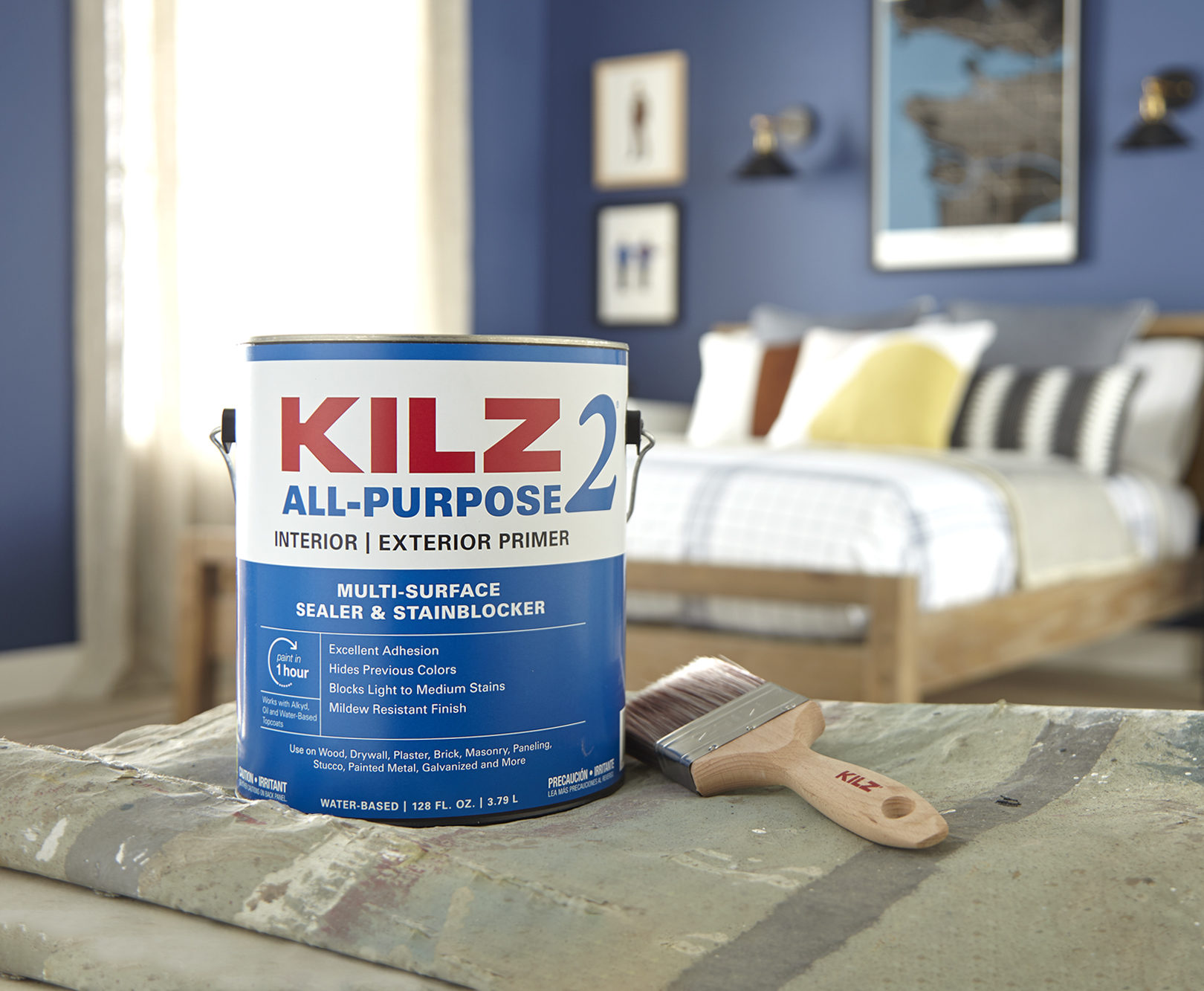
Tips for Painting Walls and Cabinets
June 1, 2020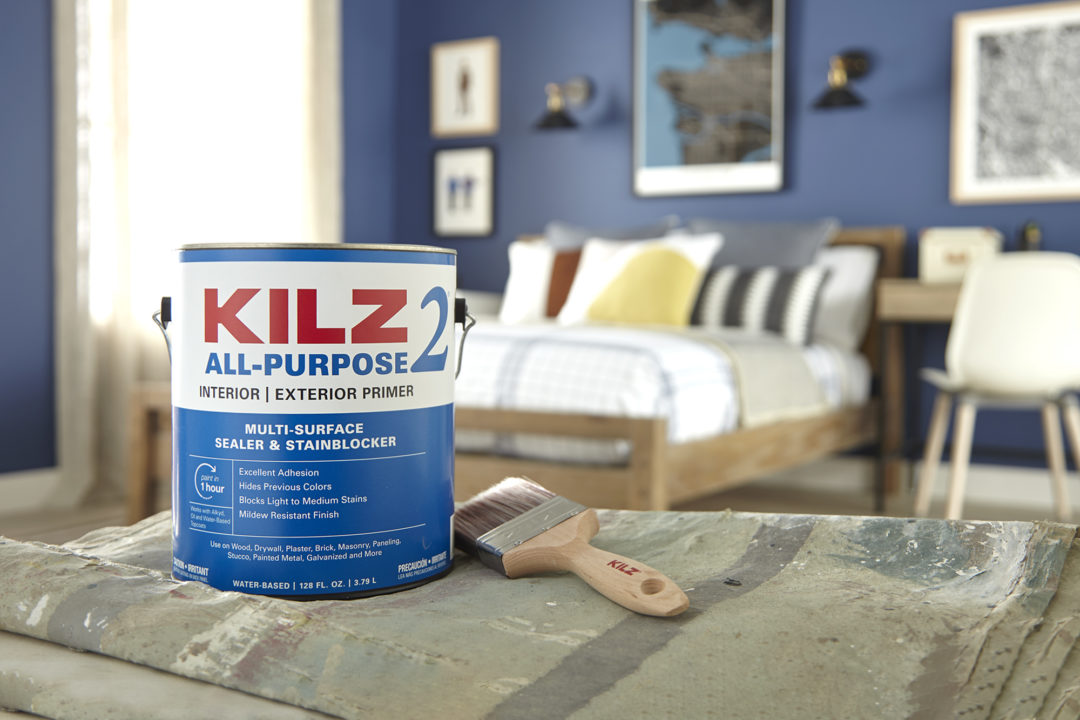
Painting your walls or cabinets is an easy and low-cost way to update any room in your house, and most painting projects can be completed in just one weekend. Equally as important as choosing the right paint color is ensuring you prime first with the right primer. Without priming before painting, you risk poor paint adhesion and previous colors or stains seeping through and ruining your new paint color.
Using the right primer ensures that your topcoat color will appear on the walls as you expected it to. If you’re painting over a darker colored wall with a new lighter shade, KILZ 3® Premium Primer works to block previous dark paint colors from seeping through and changing the look of your new paint. When painting over a light color with a new darker hue, it’s still equally important to prime first. KILZ 2® All-Purpose primer is a great choice for light to dark color changes. And if your walls have tough or exceptionally dark stains or damage from smoke or water, KILZ® Original Primer and KILZ Restoration are both formulated to block severe stains.
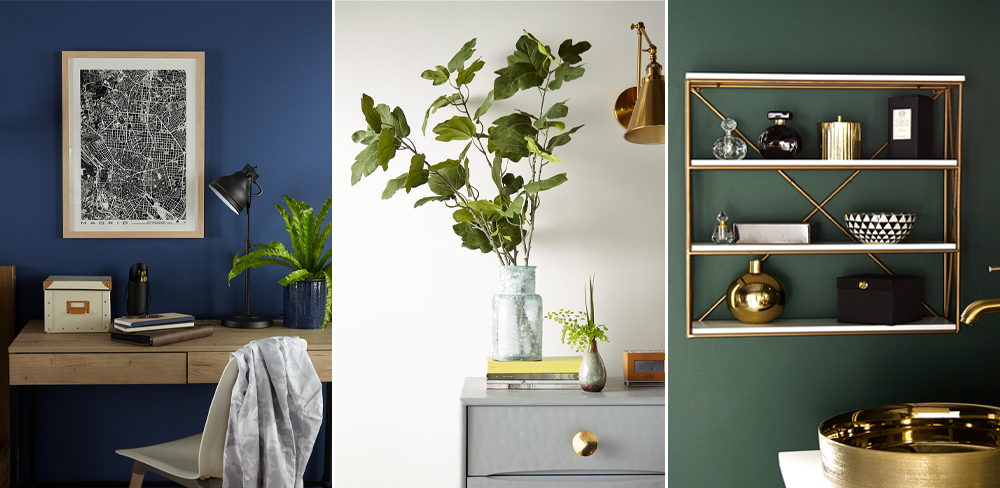
Priming before painting ensures your paint color pops!
What if you’re painting cabinets, do you need to prime? If you want excellent paint adhesion and for your colors to appear in their truest hue – the answer is yes! Primer also makes your paint job durable, and that is especially important in high-traffic areas like kitchens. You often find cabinets in kitchens, bathrooms and laundry rooms, and these areas of the home are subject to fluctuating temperatures and humidity levels that can make paint peel. For these spaces, a primer like KILZ Mold & Mildew dries with a mildew resistant primer finish that helps protect and extend the life of your paint.
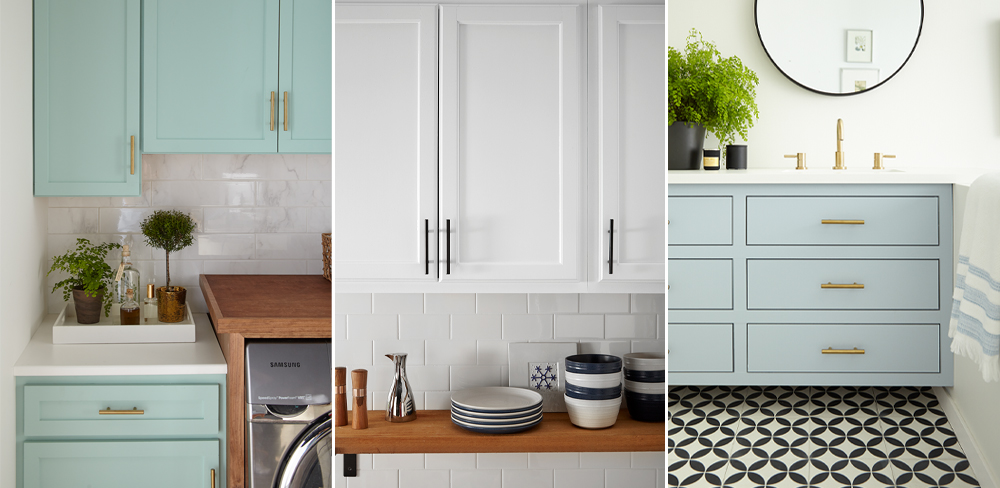
When painting cabinets, priming first ensures excellent adhesion and truer color from your topcoat.
While priming before painting can seem like an extra step, it’s a vital part of the painting process!
Always remember to refer to our website kilz.com or product back labels for additional information on which primer is right for your project and detailed instructions on how to apply our products.
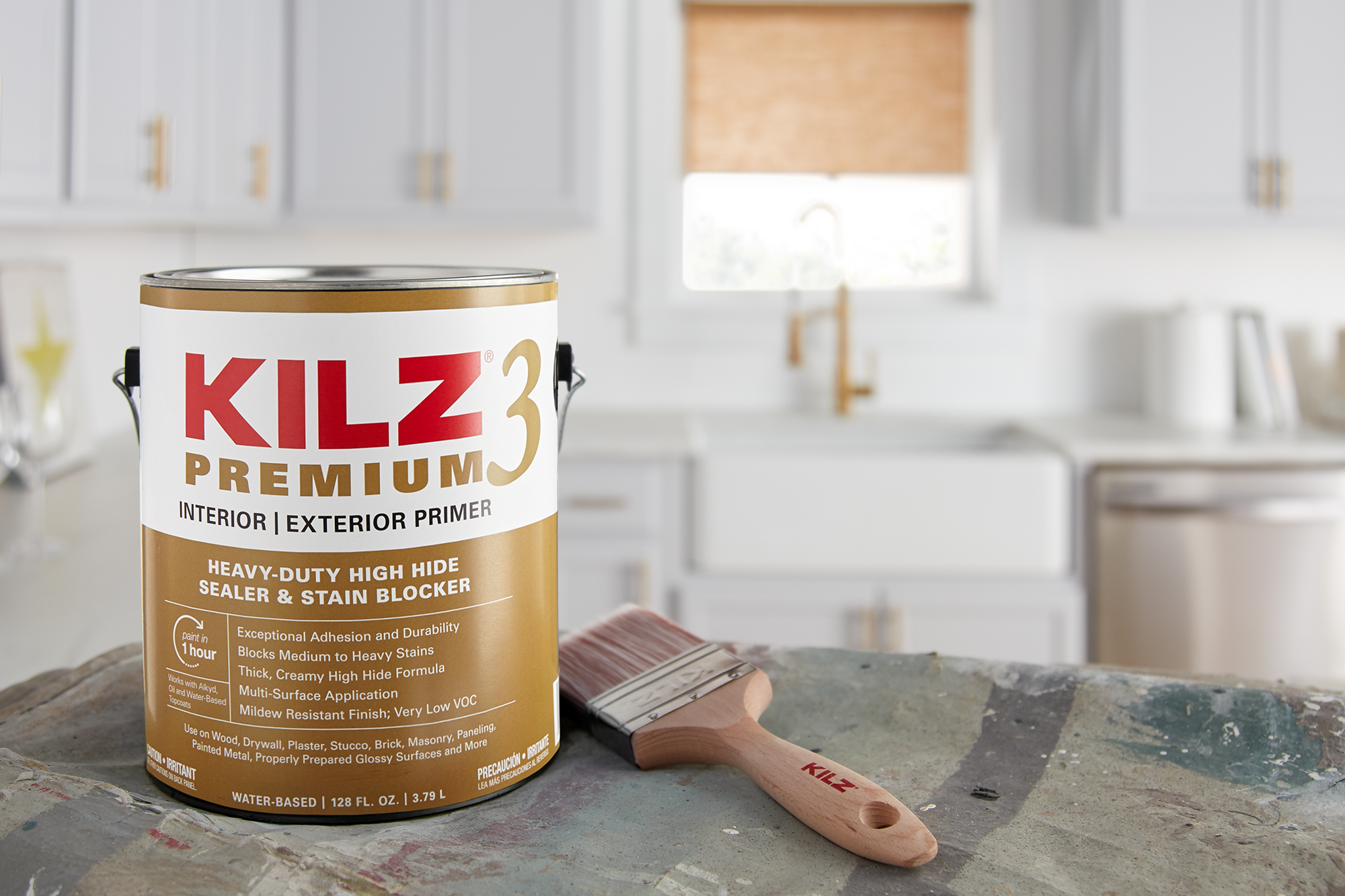
Top Primers for Kitchen Projects
May 1, 2020The key ingredient to a successful kitchen painting project is the right primer. KILZ® makes a family of hardworking primers for use on a variety of surfaces and substrates, and for best results it’s essential to choose a primer that’s specifically formulated for your type of project. Today we’re talking all about kitchens and the top primers for kitchen cabinets and walls.
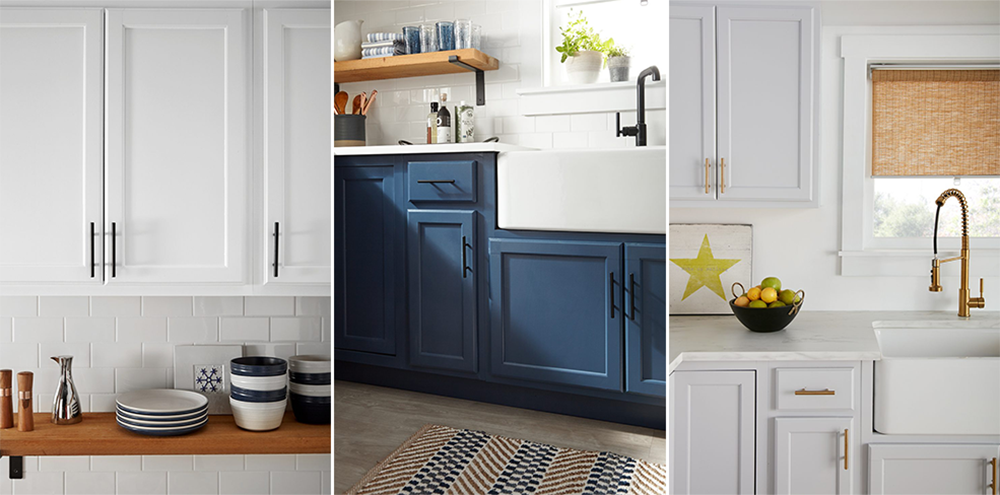
One fundamental benefit of most primers is that they make your paint job more durable. Kitchens are typically high-traffic areas and are often exposed to fluctuating temperatures, which can have an impact on the life of your paint job. Using KILZ® 3 Premium Primer before you paint, a product known for its exceptional adhesion and durability, can help ensure your paint job lasts.
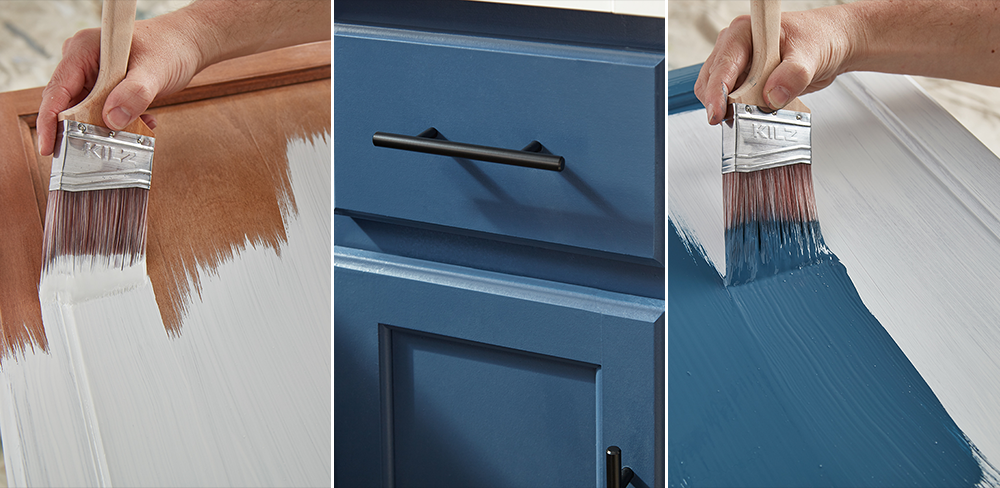
When painting your kitchen cabinets and walls, it’s important to keep in mind that kitchens can often be exposed to high humidity and moisture. These factors can negatively impact your painted surfaces if they’re not properly primed first. Using KILZ® Kitchen & Bath Primer on both cabinets and walls creates a mildew resistant primer film, and also offers excellent adhesion to most interior surfaces.
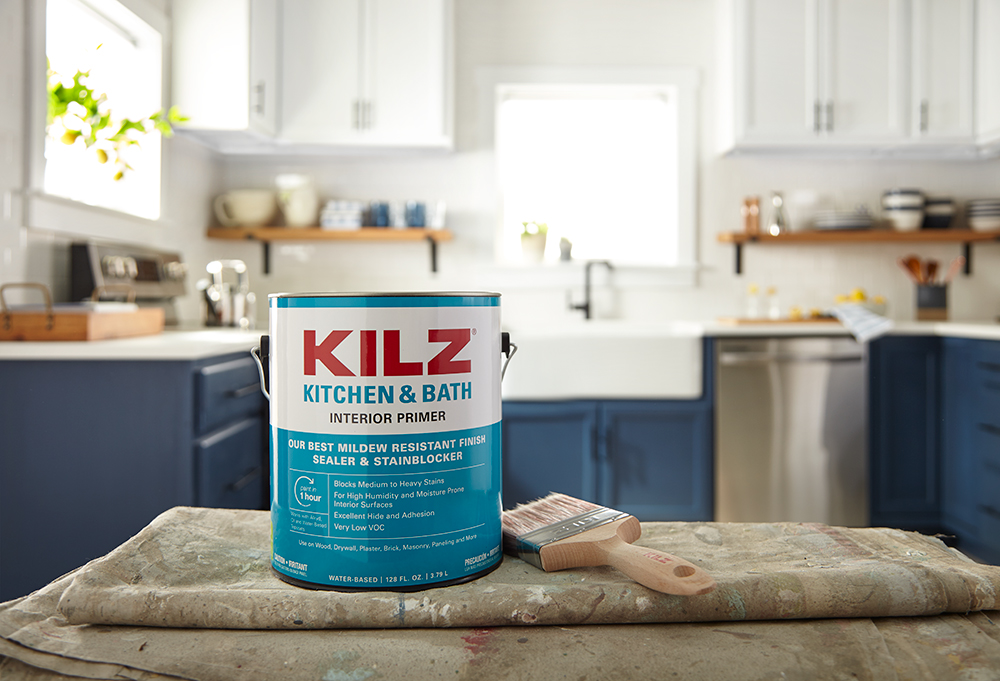
Now that you’ve found the right primer for your kitchen renovation, it’s time to start cooking up color ideas! For a look at our favorite calming and energizing paint colors, check out this recent post.
Always remember to refer to our website kilz.com or product back labels for additional information on which primer is right for your project and detailed instructions on how to apply our products.
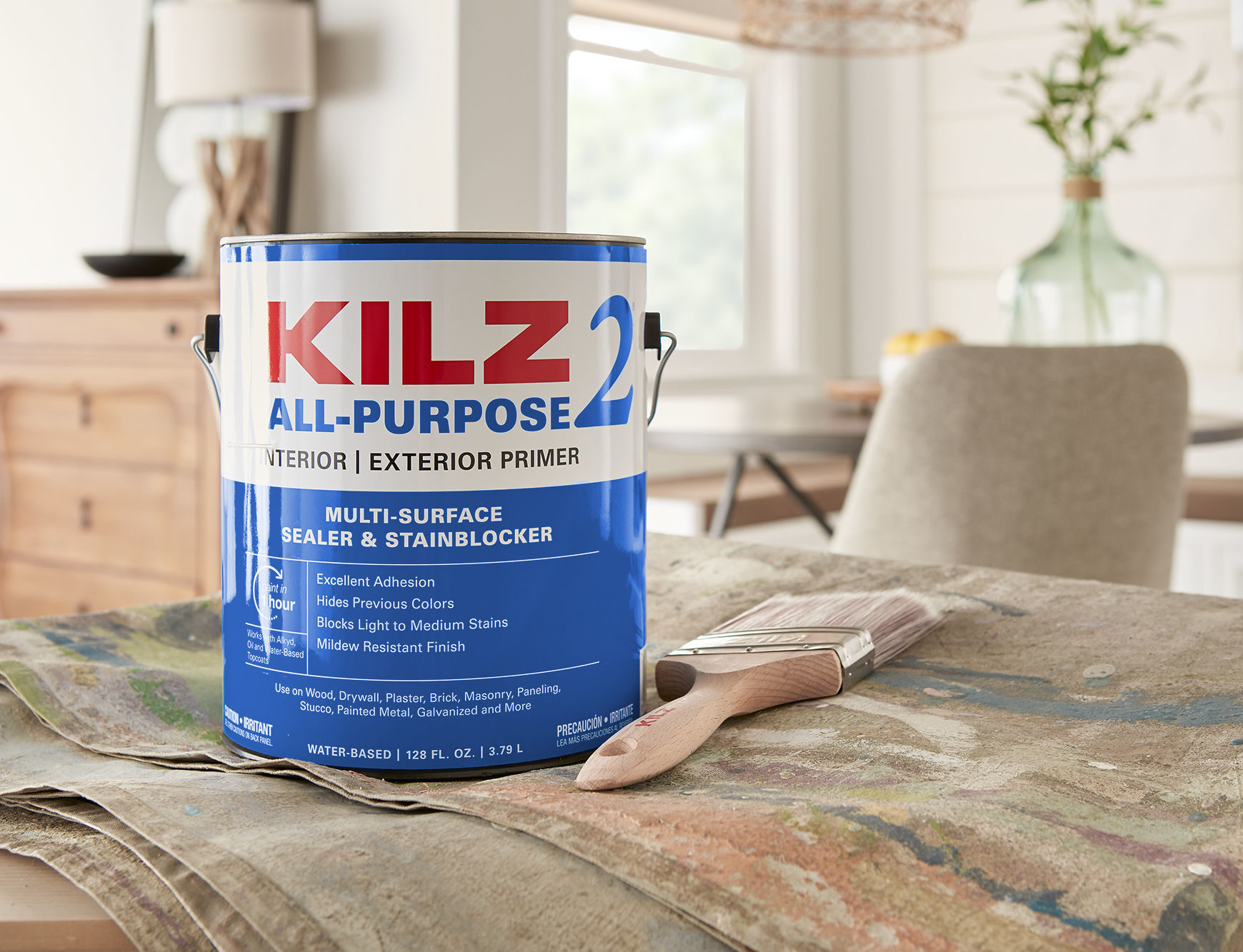
How Primer Affects Paint Color
April 15, 2020Springtime and DIY projects go hand in hand, and this spring season it feels like that sentiment rings truer than ever before. With all of us staying home to practice safe social distancing we have a lot more time on our hands, making it the perfect time to tackling a DIY painting project. But before you paint, don’t forget to prime!
While the paint’s job is all about color, the primer’s job is to prepare the surface for painting and make that color the best it can be. Even with a simple color change where you’re covering an existing lighter color with another color, it wouldn’t be advisable to paint without priming. If you paint without priming first, the end result could be a color that is a slightly different shade that the color you selected. For a simple color change from walls to furniture re-painting projects, KILZ 2® All-Purpose Primer is right for the job.

There are also certain surface types that are extremely porous, including brick and wood. If you paint on these surfaces without priming, there is a good chance the paint will seep into the surface – and that means your color won’t be as vibrant or true as you were expecting. When you’re looking to seal porous surfaces, KILZ® 1 Standard Primer and KILZ 2 All-Purpose are both great primer choices.
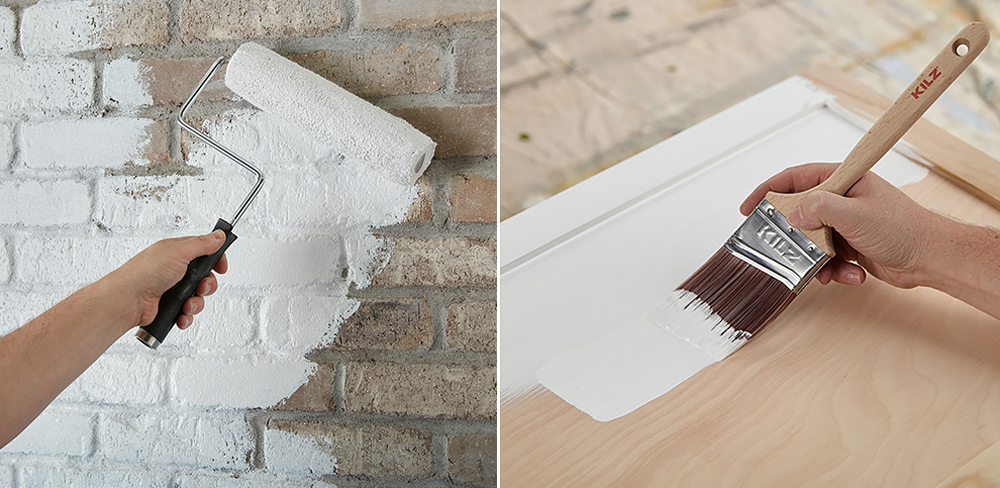
And it goes without saying that when painting over a darker color with a new, fresh-as-spring lighter shade, you definitely want to prime first. Otherwise shades like deep red will show through and change the tone of the new paint color you selected. If you’re going from a darker to a lighter color in your DIY painting project, KILZ® 3 Premium Primer has a thick, high-hide formula that is up to the task.
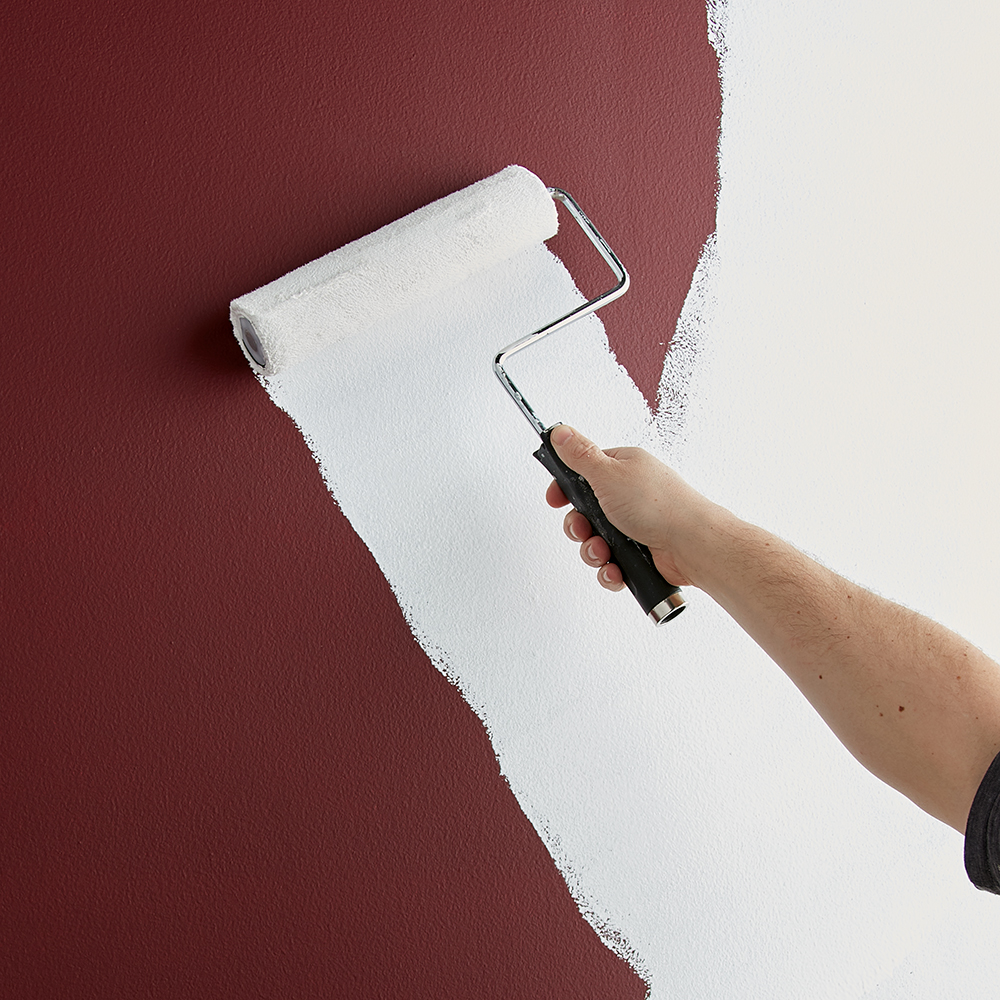
Prime first for dark to light color changes!
In all of these cases, priming before painting lessens the number of topcoats required – saving you time and ensuring your finished DIY project is the color you desired!
Always remember to refer to our website kilz.com or product back labels for additional information on which primer is right for your project and detailed instructions on how to apply our products.
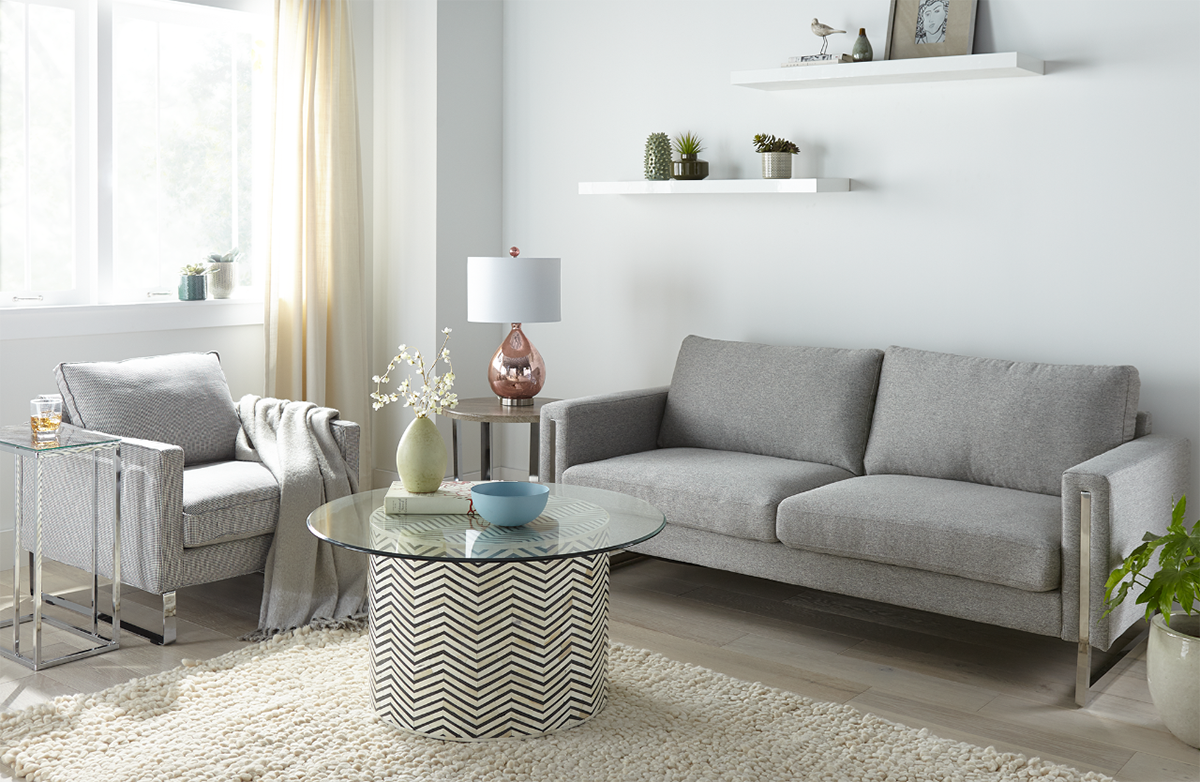
Pro Tips for Painting Over a Dark or Light Wall
December 6, 2019A fresh coat of paint can go a long way in changing the look and feel of your space, and the last thing you want after meticulously selecting your perfect shade of white is for the old, unattractive color to seep through! One of our favorite neutrals is KILZ® Tribute® paint in Alaskan Mist and it was the perfect color to lighten up this living room.
Taking the heavy olive-green walls to a bright white could have posed a challenge, including a need for excess coats of paint which we definitely wanted to avoid. It was time to prime! We chose KILZ 3™ Premium primer for its thicker, high hiding formula. This water-based primer hides surface imperfections and reduces the need for multiple coats of paint to allow a truer, richer color from the topcoat. A coat of KILZ 3™ Premium primer on the unpleasant green walls followed by paint in Alaskan Mist, and the color change was complete!
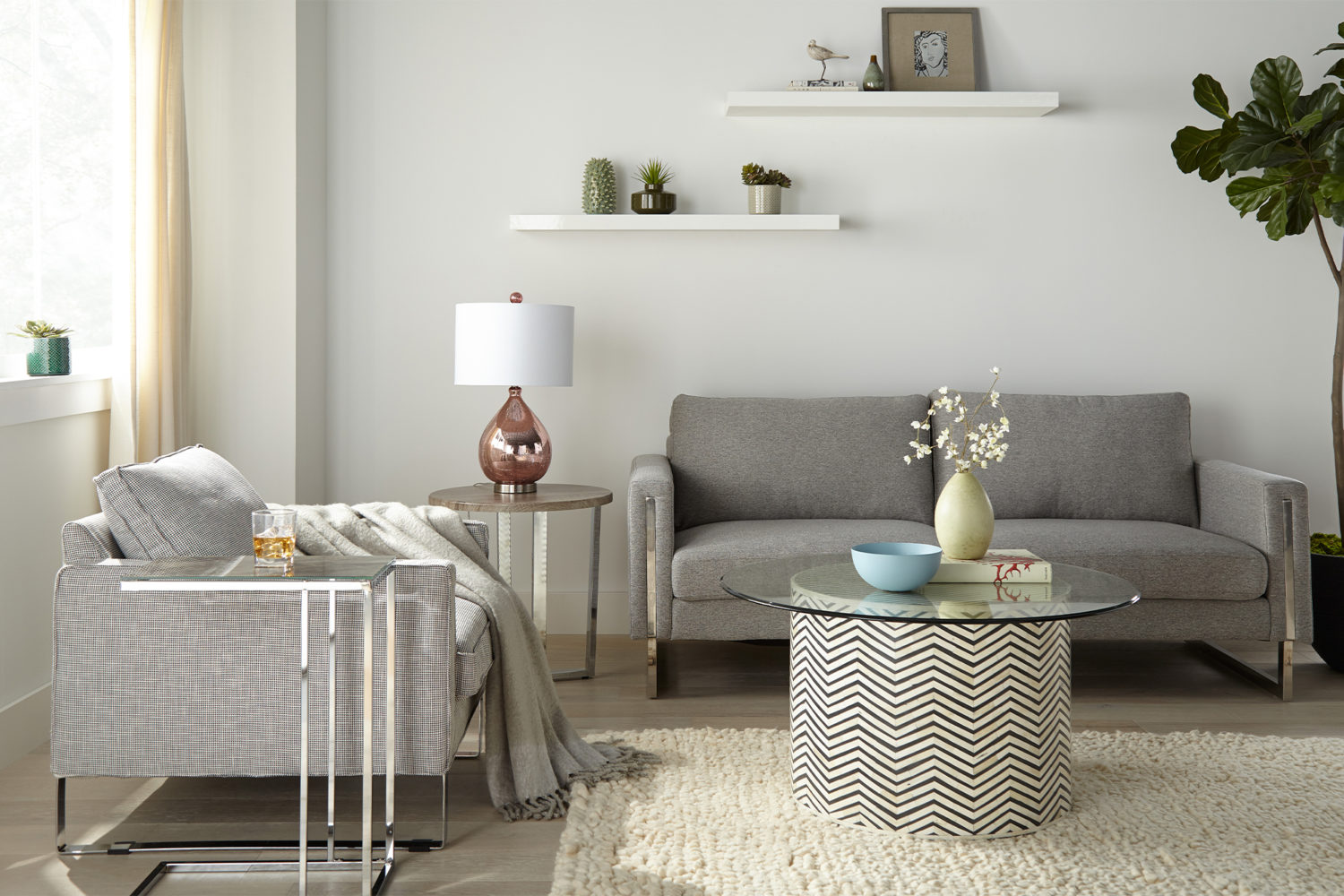
If dark paint colors are what you’re after, we have professional primer tips for a light to dark color change as well. It might seem like a dark color like BEHR® paint in Nocturne Blue can easily cover a lighter one in this bedroom refresh, so why prime? However, if you want that deep gray with dark blue undertones to look just right, we would suggest priming first with KILZ 2® All-Purpose primer. This water-based primer offers enhanced hiding, making it ideal for changing colors and helping to lessen the number of coats of paint required.
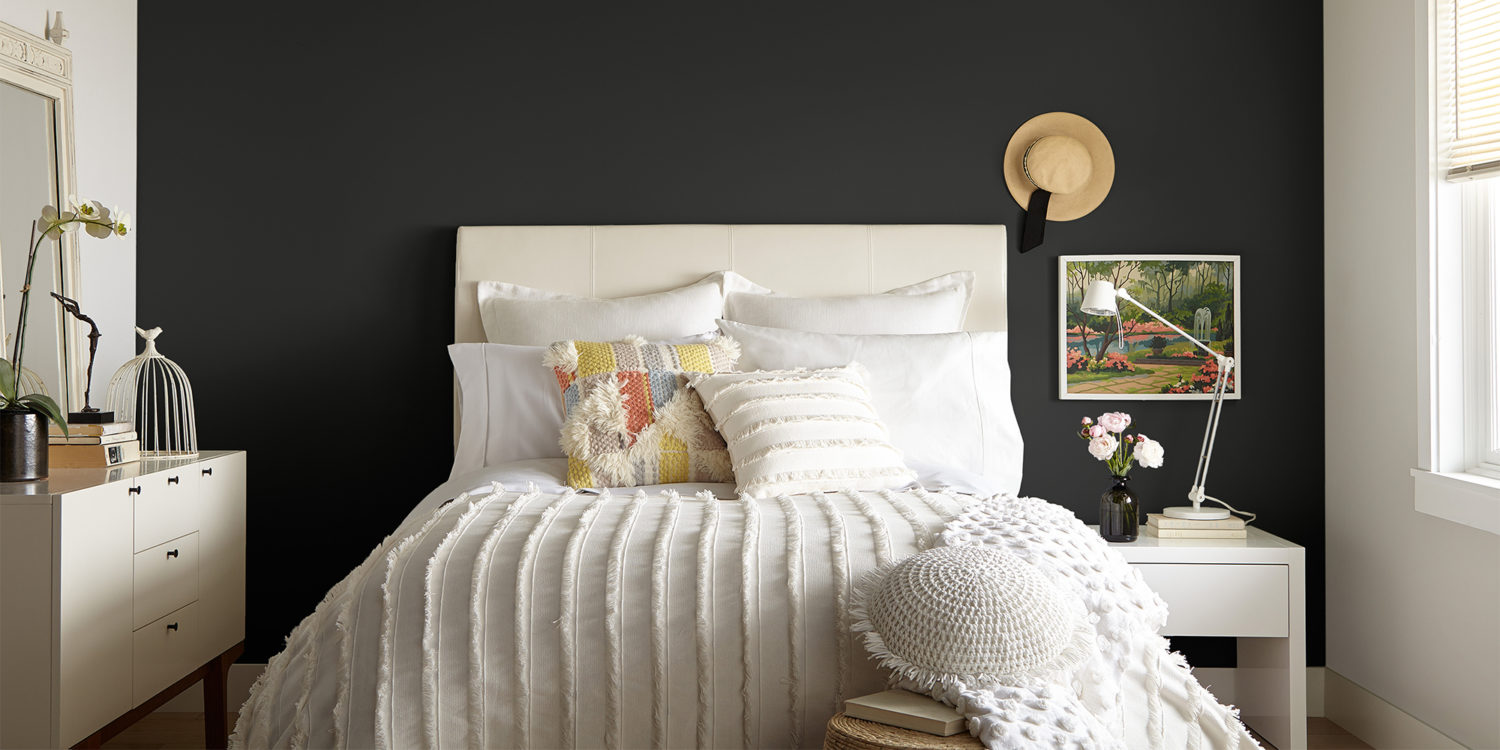
When painting to hide a previous color, KILZ® Primer reduces the need for multiple coats of paint to allow truer, richer color from your topcoat.
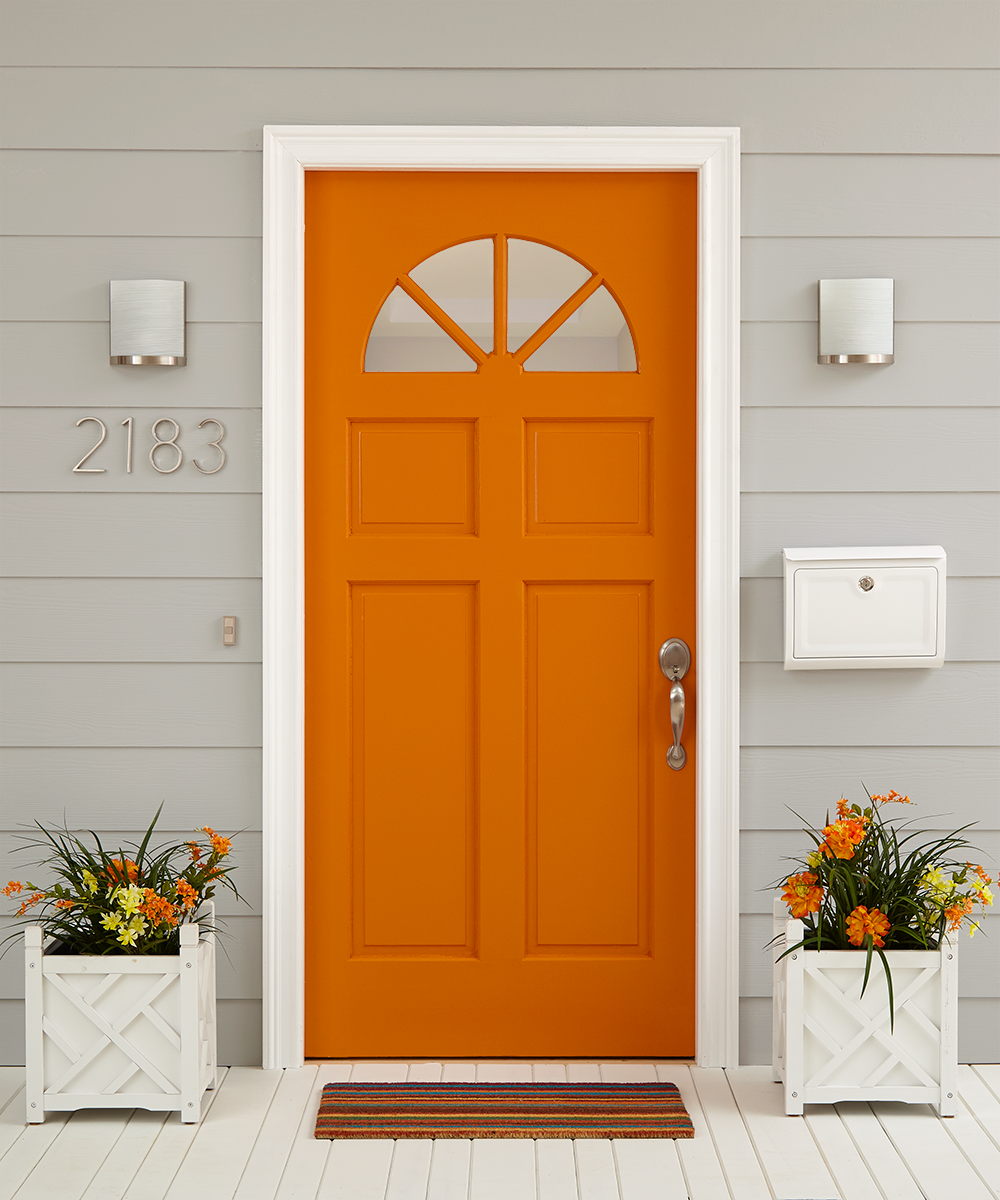
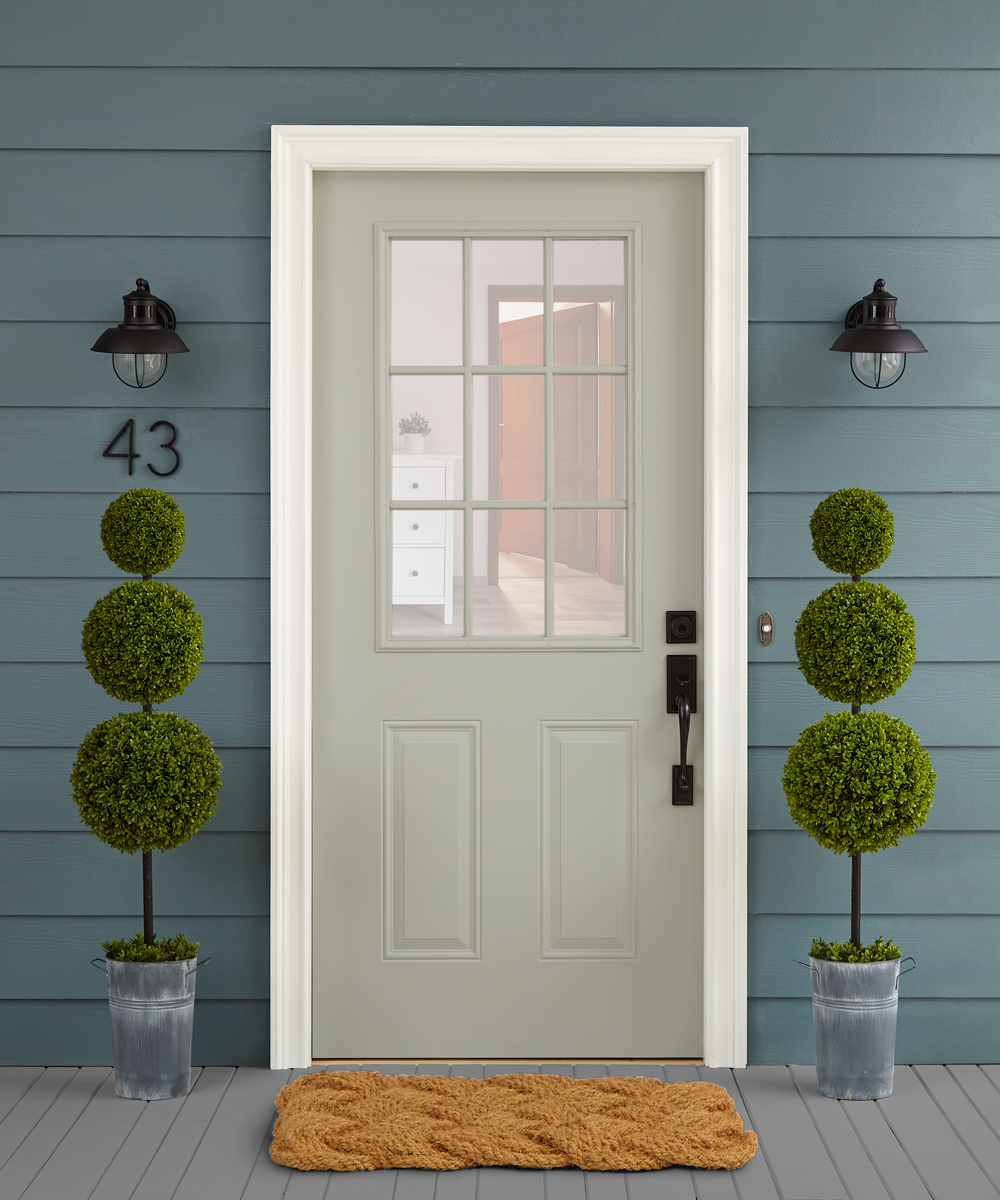
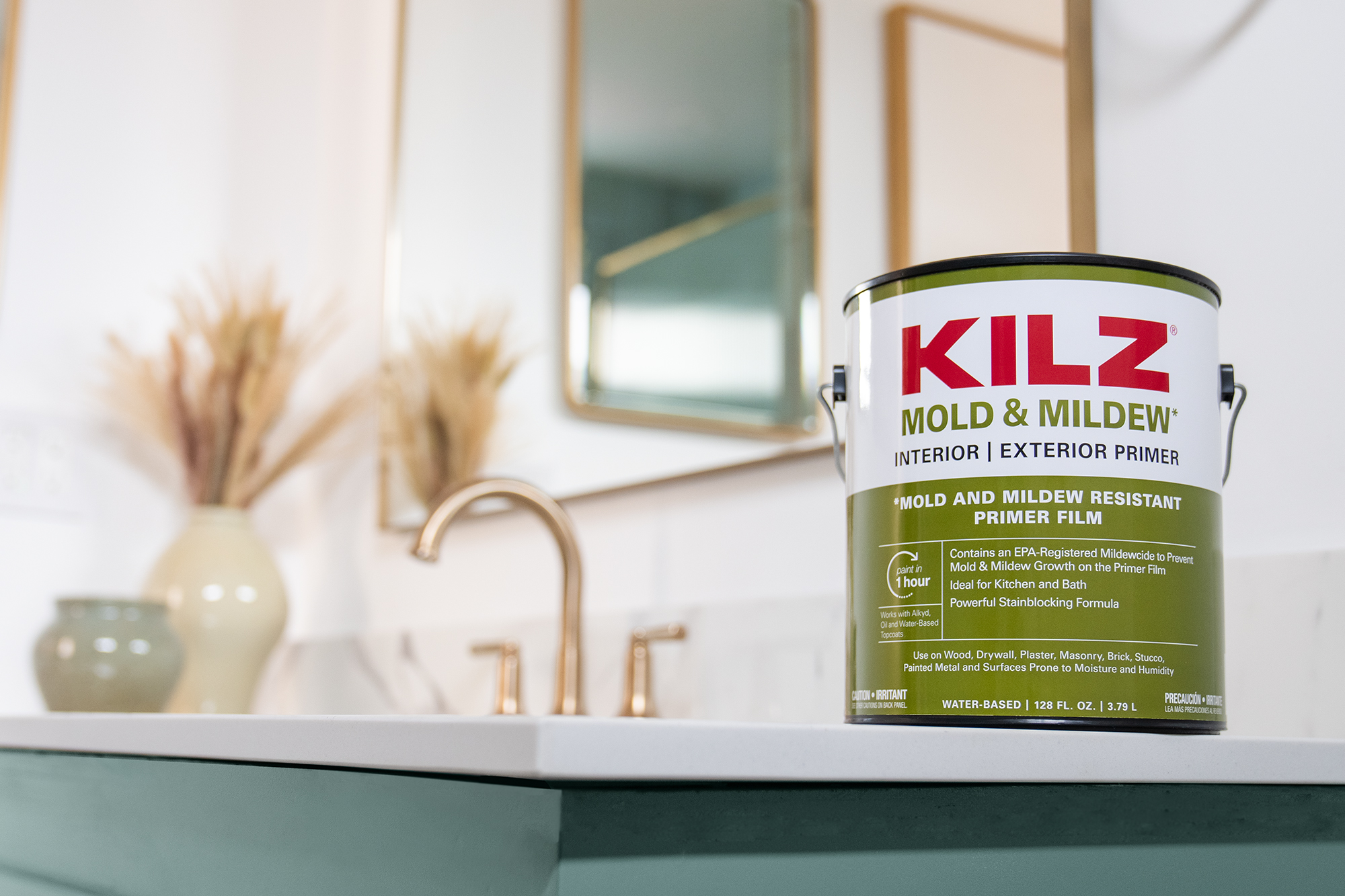
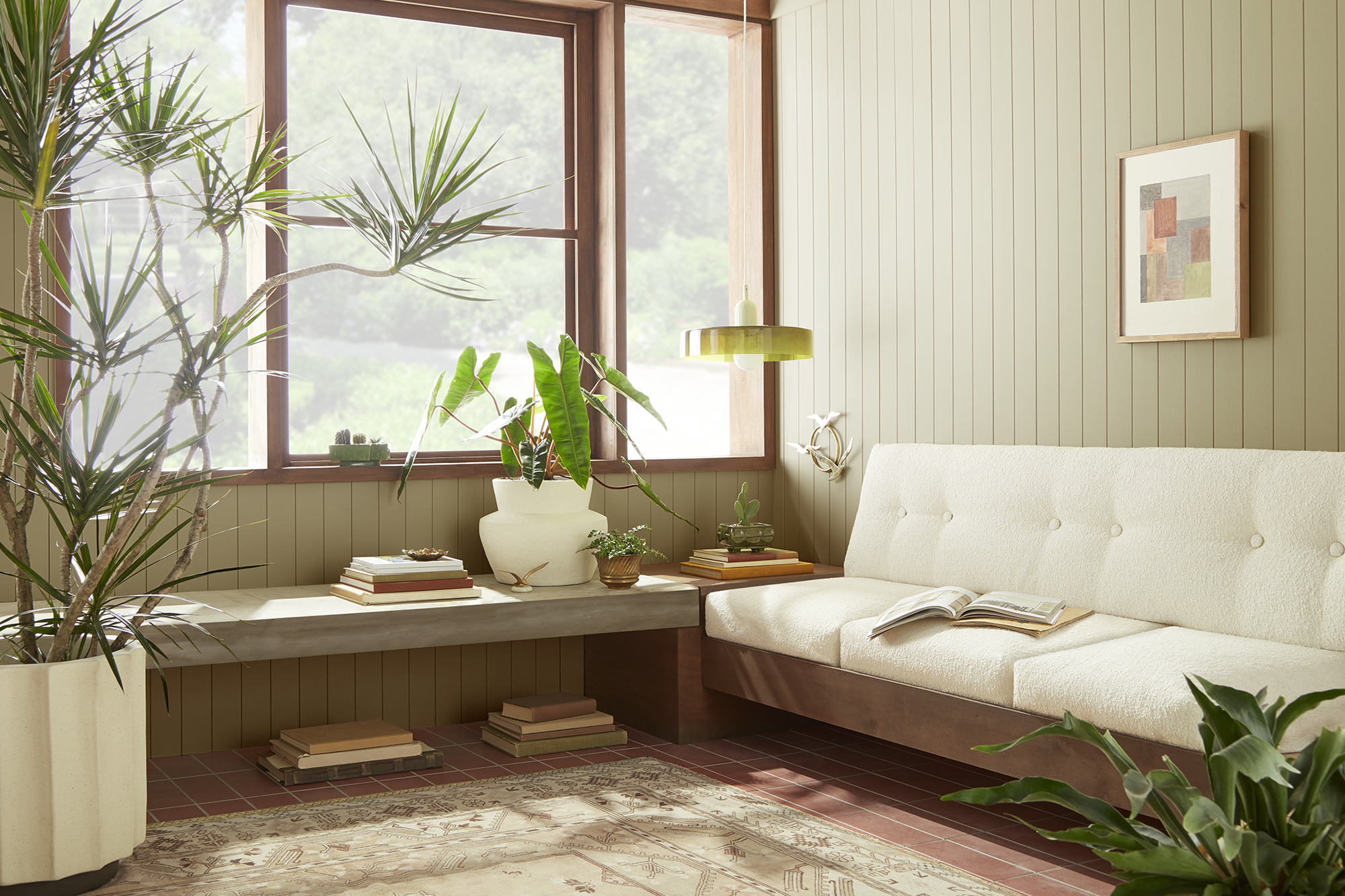

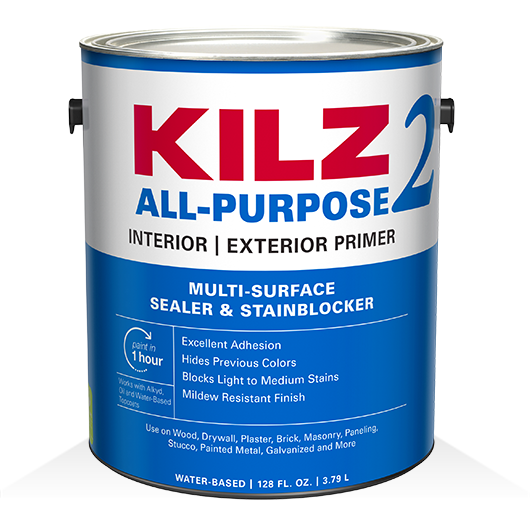
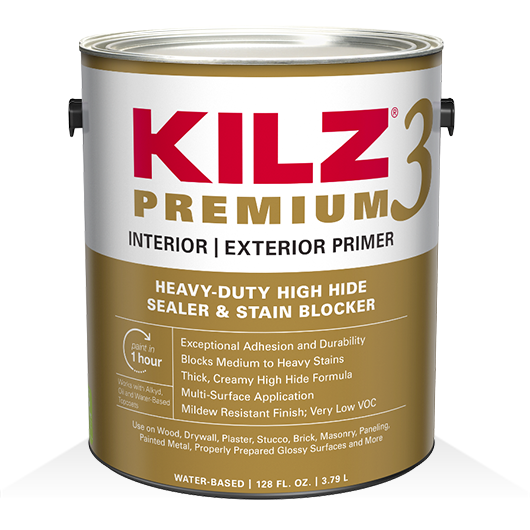
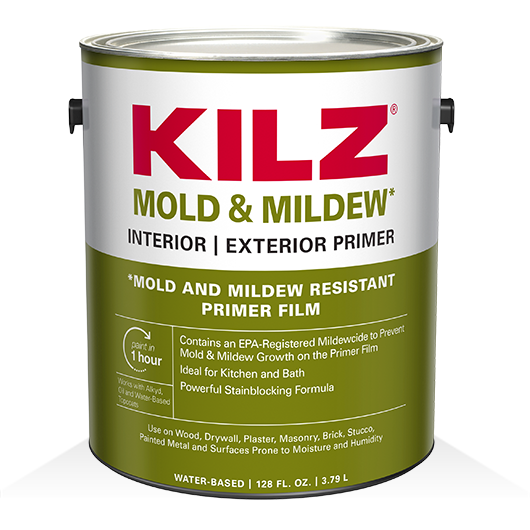
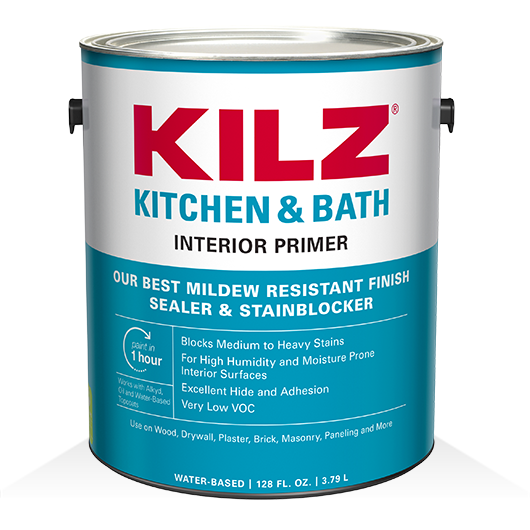
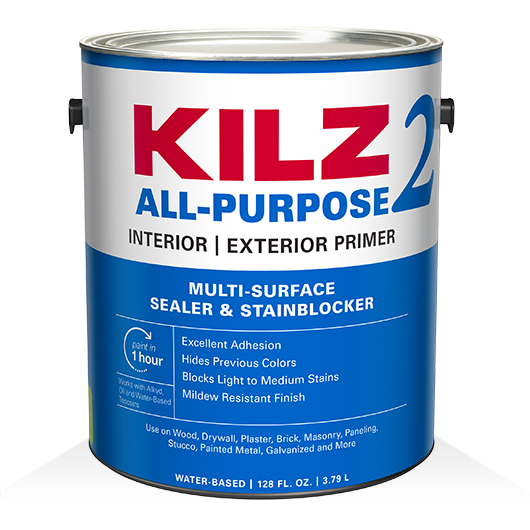
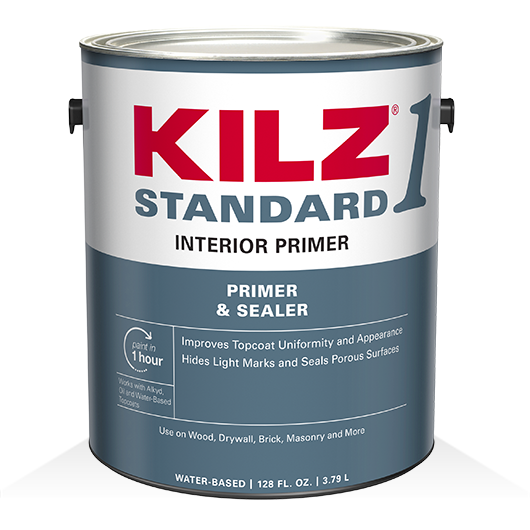
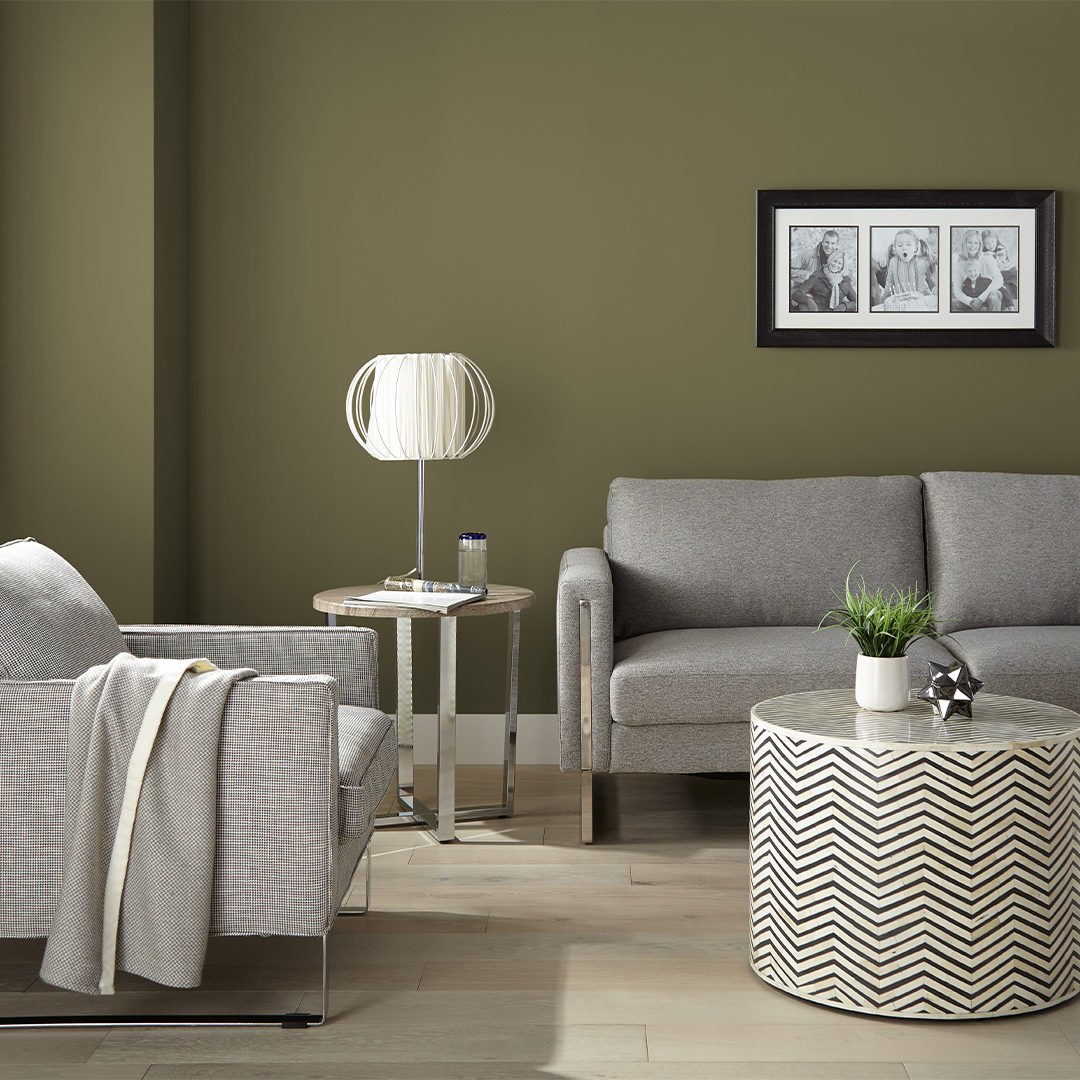
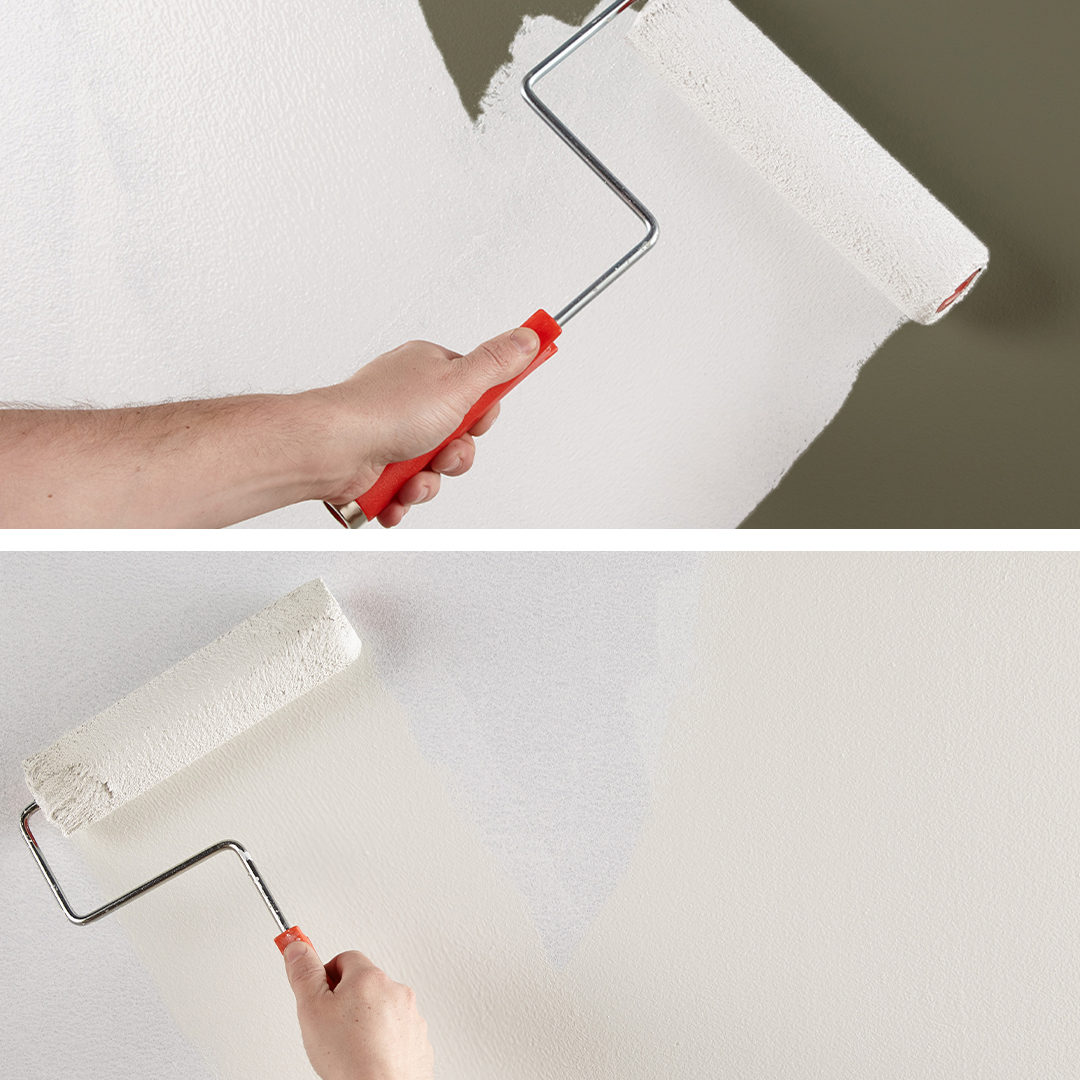
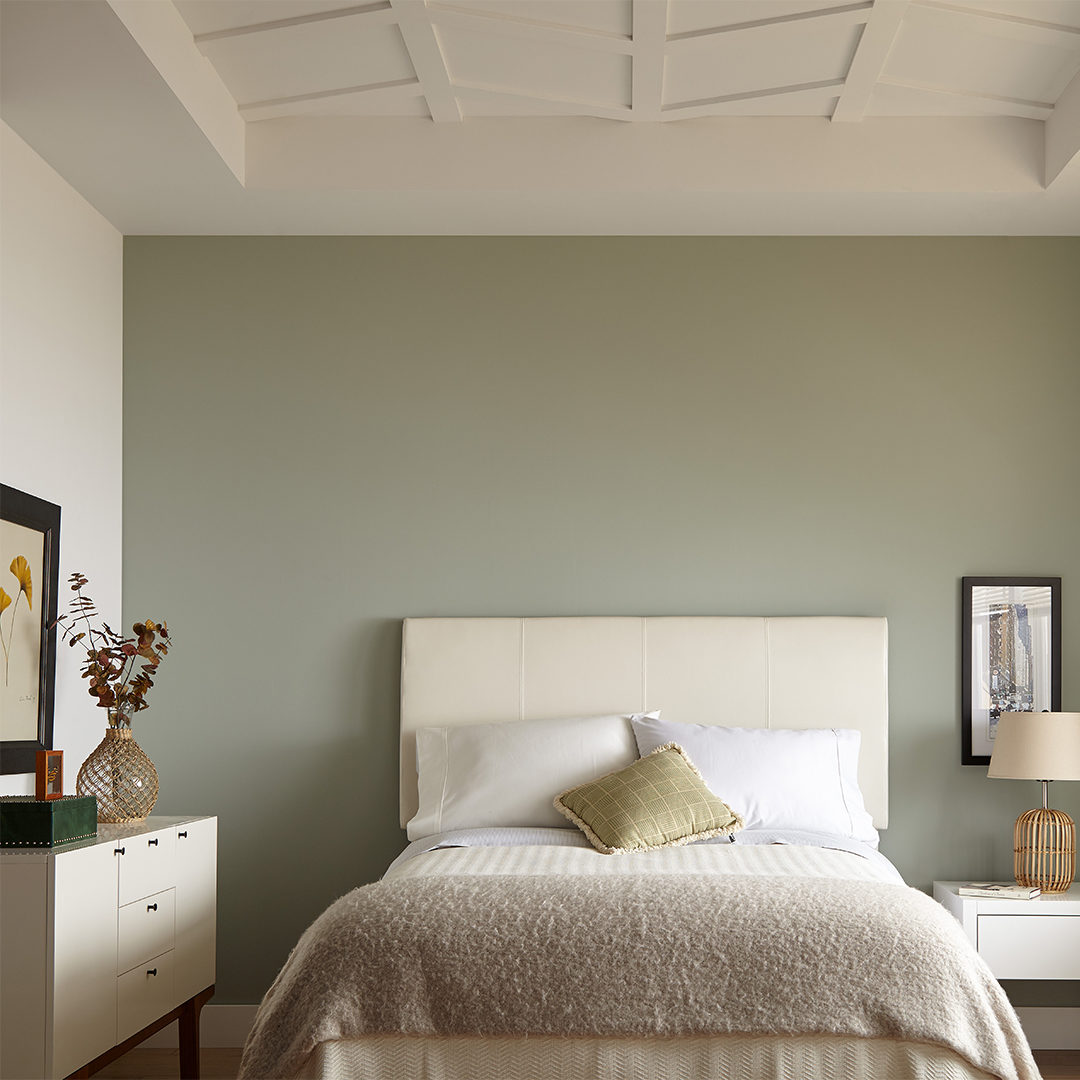

join the conversation:
SHARE this post: